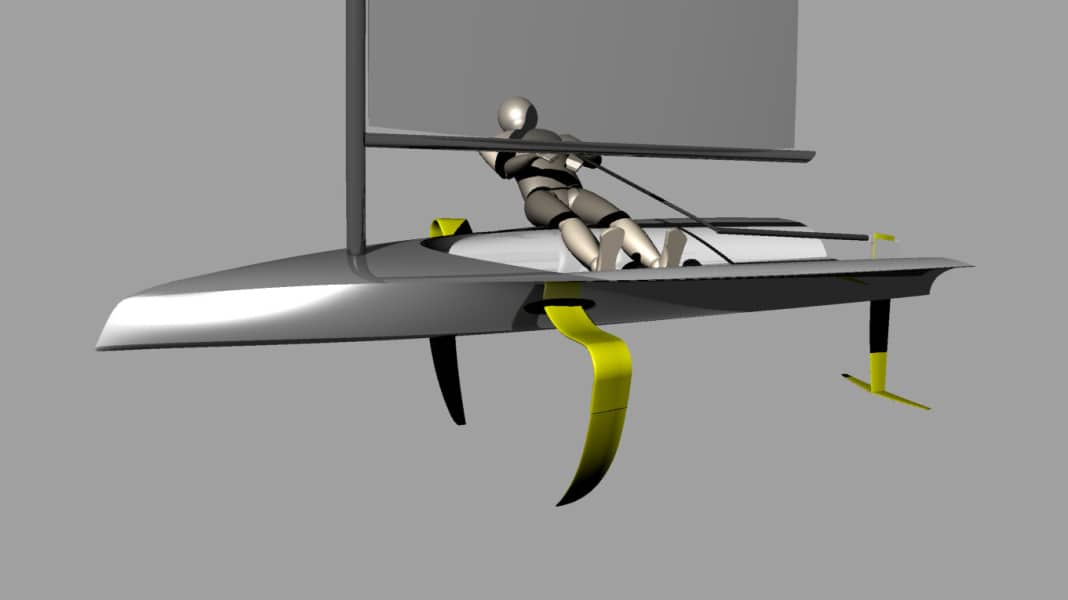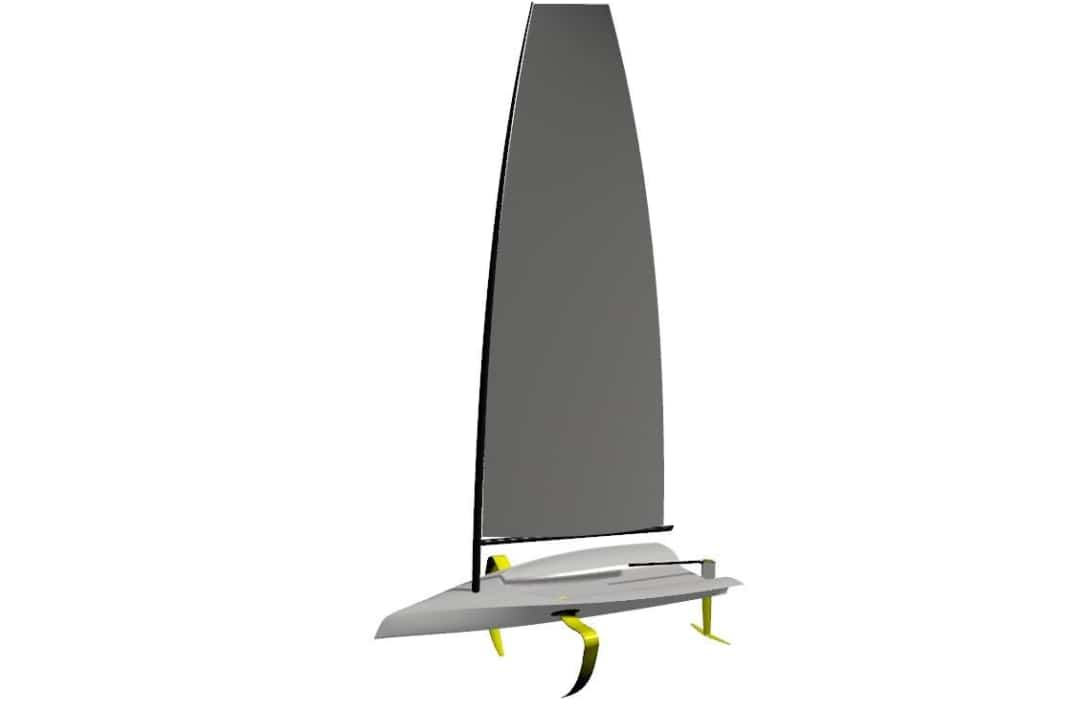
The name is as simple as the concept: The Foiling Dinghy. According to Thilo Keller (30), no more words are needed to describe his new development. Keller, a successful A-Cat sailor and naval architect, has invented a foil mechanism that should enable anyone to achieve flight mode. "We realised that there was a gap in the market," says Keller, Managing Director of Advanced Sailing Technologies GmbH (AST) in Potsdam, which was founded in June 2017. "For many people, foiling is too demanding and requires too much training. Most people can't or don't want to spend this time after work or at the weekend, especially as the wind doesn't always play ball. They just want to get on board and sail away. This is exactly what our dinghy is designed for: Anyone who can sail straight ahead with a dinghy will also be able to handle the foiling dinghy. It's as easy as sailing with a laser."






At the heart of the dinghy is a patented automatic centreboard mechanism, which was successfully tested in the A-Cat and last year won the Foiling Innovation Award at Foiling Week, a global event with three events for new foiling designs. Two L-shaped centreboards are mechanically connected to each other, the windward centreboard is slightly more vertical and prevents drift, the leeward centreboard is slightly more horizontal for lift and righting moment. In addition, a T-rudder provides buoyancy and stability. "In manoeuvres, the helmsman only has to operate the sheet as usual, everything else is automatic, he doesn't have to adjust anything," says Keller. No sensing systems are required, as is the case with the International Moth, for example.
The 3.8 metre long and 1.8 metre wide dinghy (2.10 metres with the foils extended) is built using glass fibre and epoxy resin in a sandwich process; the hull is expected to weigh 30 kilograms and the complete boat 55 kilograms. Only the foils and the rudder are made of carbon fibre, partly produced using a 3D printing process. It lifts out of the water from seven knots and could reach speeds of up to 25 knots, which would put it in the region of the Moth. The foils are only 1.10 metres deep, so the dinghy would also be ideal for shallow waters.
The foiling dinghy is to be launched on the market for 9,900 euros. The first public presentation is planned at the Hiswa water sports fair in Amsterdam in the second week of March, and the dinghy will also take part in the Foiling Week on Lake Garda at the end of June.
